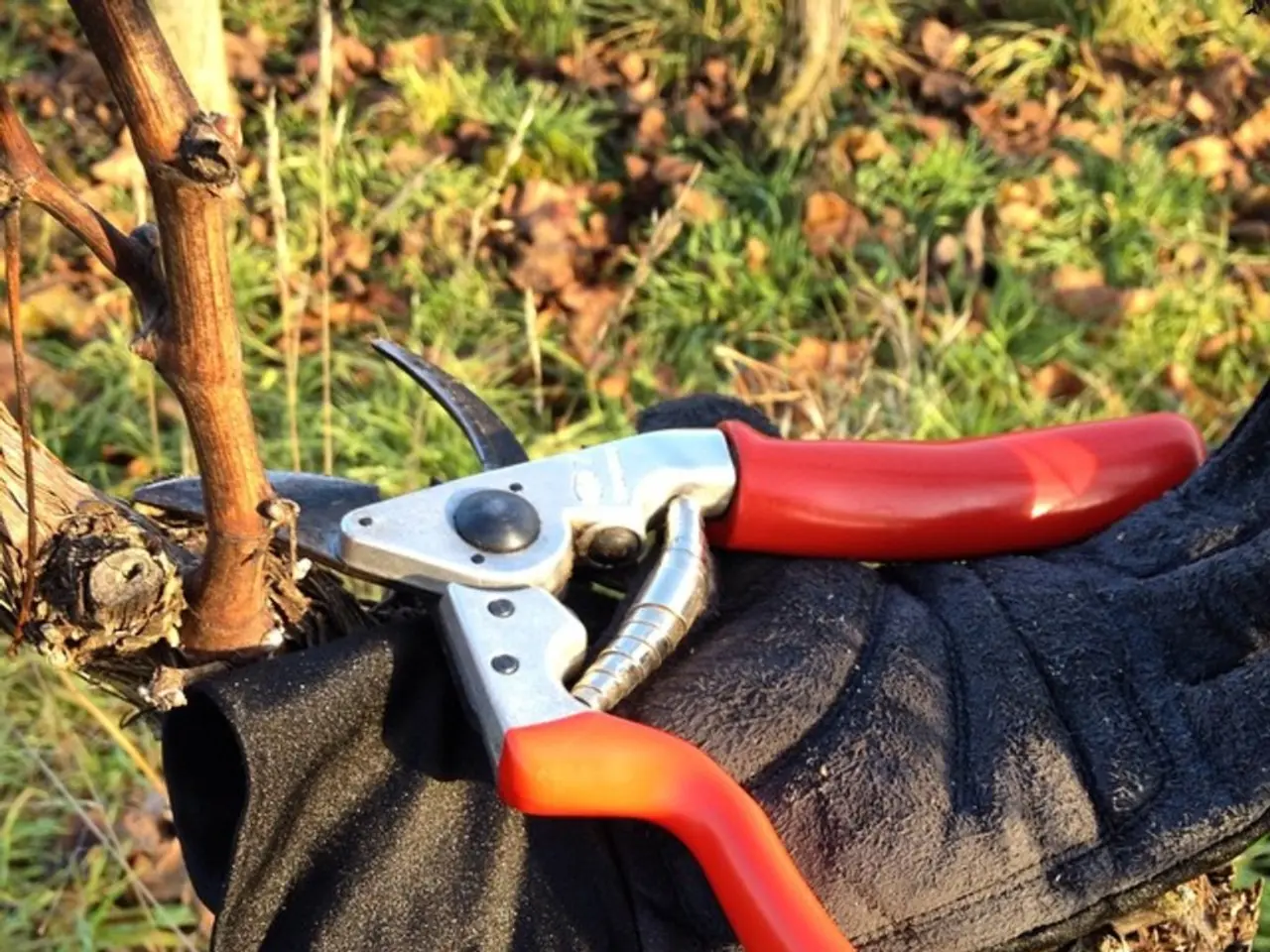Avoid These Mistakes on Your Garden Turf
For a vibrant, resilient lawn that resists common problems like thatch buildup, brown spots, and patchy areas, focus on these key practices.
Embrace Natural Mulch
Leave grass clippings on the lawn as they decompose, providing a natural mulch that retains moisture, suppresses weeds, and feeds the soil with nutrients [1].
Dethatch Regularly
Dethatch your lawn occasionally to remove the layer of dead and living organic matter that can suffocate grass. Dethatch cool-season lawns in fall and warm-season lawns in spring to early summer. Keep thatch under half an inch to help mulch grass naturally [1][4].
Aerate Regularly
Aerate the soil regularly to relieve compaction caused by foot traffic or weather, improving root access to air, water, and nutrients. Core aeration is best, and timing depends on your grass type and soil [1][3][4].
Mow Wisely
Mow at the right height and frequency, following the one-third rule (never cut more than one-third of grass blade length at a time) to avoid stress and spread of fungal diseases like brown patch [2][3].
Water Wisely
Water wisely and deeply, preferably in the morning, to reduce disease risk and promote deep root growth. Avoid overwatering, especially excessive moisture in the evening that encourages fungi like brown patch [2][3].
Fertilize Sparingly
Avoid overfertilizing, especially with nitrogen, which can worsen fungal problems. Use potassium-rich or balanced slow-release fertilizers instead [2][3]. Test soil before fertilizing.
Control Weeds and Pests Naturally
Control weeds by encouraging thick, healthy grass and using pre-emergent herbicides early in the season if needed [3]. Use integrated pest management with eco-friendly options, and keep equipment like mower blades sharp to reduce damage and disease spread [3].
Incorporate Native Plants
Incorporate native plants and groundcovers in your landscape, which have deep roots that reduce erosion and runoff, provide natural mulch, support biodiversity, and require less maintenance once established [5].
Mulch New Plant Beds Lightly
Mulch new plant beds lightly and keep them weed-free, avoiding fertilizers and pesticides to nurture natural growth [5].
By following these natural maintenance steps, you support a resilient, vibrant lawn that thrives without relying on chemical-based solutions. Regular aeration, proper mowing, considerate watering, and avoiding excessive nitrogen stand out as critical measures to maintain lawn health naturally [1][2][3][4].
Avoiding Common Mistakes
- Moisture, air, and nutrients are unable to seep into the soil if it is dry, hard, and compact. Healthy soil conditions should be restored by loosening and aerating the soil.
- Chemical-based insecticides, herbicides, or pesticides can cause pollution and contamination, and could kill garden-friendly critters.
- Thatch is a layer of slow-to-decompose grass stems, roots, and organic debris that can choke healthy grass and cause problems. Using dull blades in gardening tools can cause stress to plants, affect growth, and attract pests.
- Wet grass is weighed down by water so the blades bend, making mowing difficult and scalping the lawn possible.
- Avoiding shaded areas in the yard can result in an uneven or patchy appearance. Some grass varieties can grow in shady or semi-shady spots, and grass seed mixes made specifically for shady yards are available at local garden centers.
To maintain a beautiful, healthy lawn, remember to leave grass clippings on the lawn, dethatch regularly, aerate the soil, mow wisely, water wisely, fertilize sparingly, control weeds and pests naturally, and incorporate native plants. With these practices, you'll enjoy a lush, resilient lawn that requires less maintenance and is kind to the environment.
- To enrich the home-and-garden environment, consider incorporating native plants and groundcovers in your landscape, as they provide natural mulch, support biodiversity, and require less maintenance once established.
- For a home-and-garden project that involves gardening, leave grass clippings on the lawn as they decompose, providing a natural mulch that retains moisture, suppresses weeds, and feeds the soil with nutrients.






